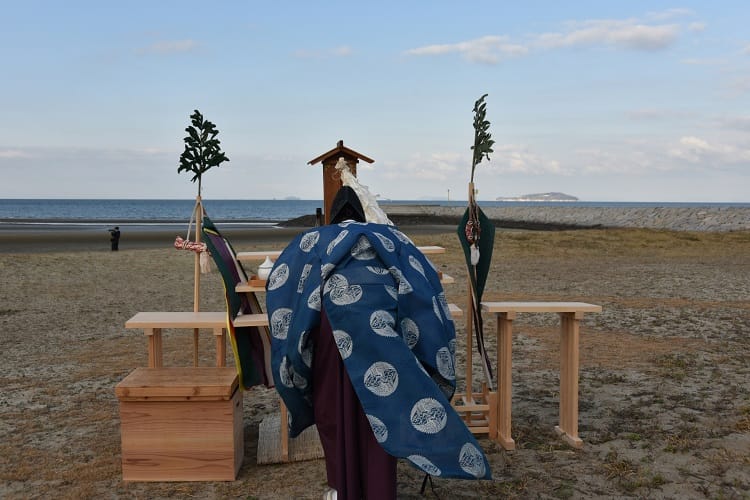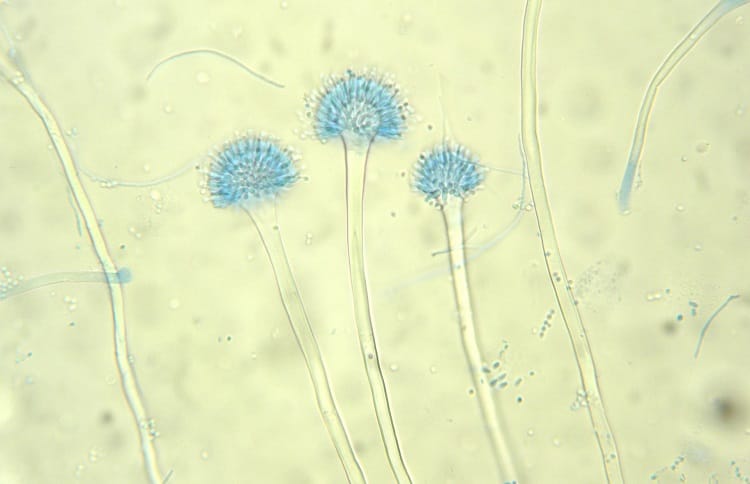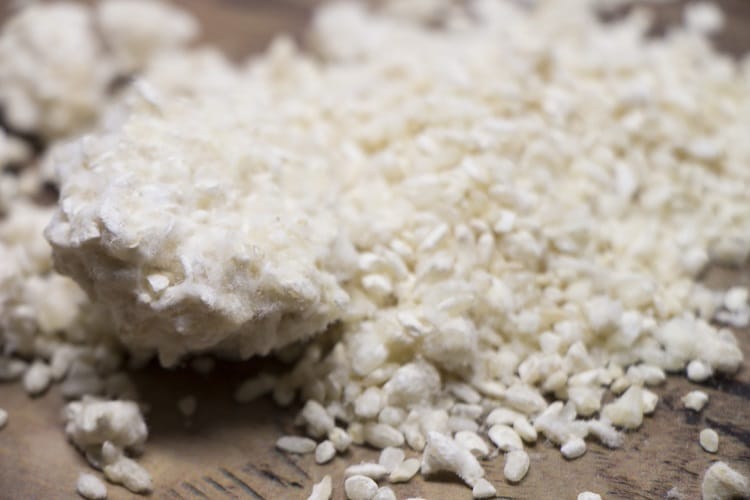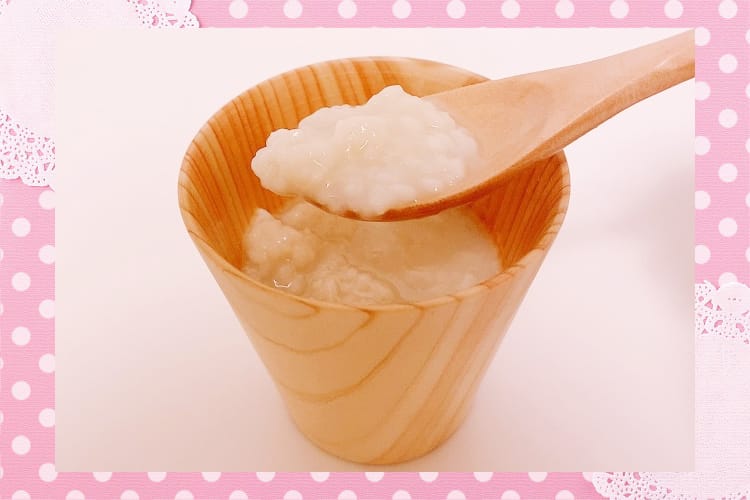
Recently, amazake, which has been drunk in Japan for a long time, has been the focus of attention, and it has come to be seen frequently at supermarkets and convenience stores. Amazake, which is also called “drip drip,” is a drink that has been attracting attention for the prevention of summer fat.
Perhaps some may think amazake is a type of sake. Amazake is made from rice by utilizing the fermentation effect of koji, similar to sake. However, unlike sake, amazake does not contain alcohol because it only converts rice starch into sugar by koji mold, that is, it saccharifies. It is not a liquor, it is a natural traditional health drink that children can drink with peace of mind. Amazake contains many nutrients such as vitamins and essential amino acids that we need to live.
Nowadays, amazake has the image of behaving in a shrine during the first visit to warm the body during the cold winter months, but in the old days people used to drink cold amazake in the summer. At the end of the Edo period, a wide variety of merchants were selling goods around the city, one of which was amazake. Especially in Kansai, he sold amazake in the summer and in Edo throughout the four seasons. As you can see from these customs, the word "amazake" used in haiku is a summer season word. Also, in the Edo period, it was considered to be "samurai's manners" to prevent drunkenness by drinking amazake before the sake table.
1. Rice malt amazake is a perfect drink to prevent summer fat
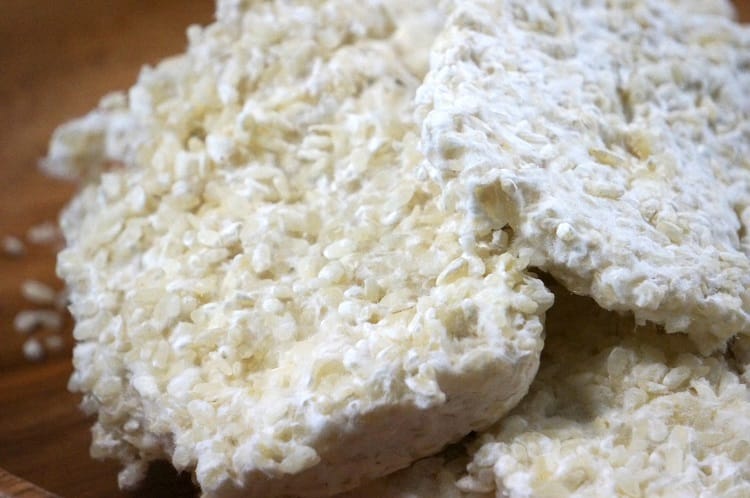
Ume-koji amazake is called "drip drip", and it contains vitamins such as glucose and oligosaccharides that are easily absorbed by the bodyB Group, amino acids, etc. are contained in rice malt amazake. In addition, since the enzyme of rice koji amazake is believed to help digestion and absorption, the number of people who drink amazake for health is increasing.
Amazake has been drunk in Japan for a long time. The Edo period book "Morishada Mankou" describes how many amazake vendors sell amazake in the summer. During the Edo period, the nutritional and hygiene conditions were not the same as they are today, so he was drinking amazake to survive the summer. Amazake, which can provide both hydration and nutrition at the same time, is still attracting attention as a drink to prevent summer fat.
For those who find the taste of amazake difficult to drink, break it with soy milk, milk, or fruit vinegar to make it easier to drink. It is delicious whether cold or warm, so you can drink it according to the season.
2. Difference between the manufacturing method of rice koji amazake and sake lees amazake
There are two types of amazake made from rice malt and some made from sake lees. Both are fermented foods made using the function of fermenting koji. So what is the difference between rice malt and sake lees?
For rice koji amazake, add hot water to rice koji or rice and seed koji,60It is made by keeping around ℃. The activity of koji mold becomes active60At around ℃, starch of rice is decomposed and converted into glucose and oligosaccharides.60If the temperature is lower than ℃, the function of the enzyme is weak and it does not become sweet, and if the temperature is too high, the enzyme breaks and it does not become sweet. this60Since the temperature of ℃ is also the temperature at which other bacteria cannot survive, if it is lower than this, bacteria may propagate and spoil, or lactic acid bacteria may increase and become sour. The result is amazake, which has a natural sweetness. Amazake made from rice malt does not contain alcohol, so children and people who are not good at alcohol can drink with confidence.
On the other hand, sake lees amazake is made by dividing sake lees with water and adding sweetness. It is often used in shrines and fairs at Hatsumode, so I think many people have once tried sake lees amazake.
Sake lees are the squeezed residue that remains when making sake. Sake is made from rice and koji as raw materials by fermentation with koji mold and alcohol fermentation of yeast. Therefore, alcohol remains in sake lees, and you can enjoy the fruity aroma and deep flavor like sake.
Alcohol content in commercially available sake lees amazake is less than XNUMX%, but when making sake from sake lees1May contain more than% alcohol. This is because the alcohol concentration varies depending on the sake lees used. Be careful when drinking sake lees amazake if you are vulnerable to alcohol or are pregnant.
また3Month3According to traditional customs, the plum blossoms and dolls are decorated at home with girls, and white sake is prepared along with the hina hail. White sake is prepared by mixing steamed glutinous rice and rice malt with mirin or shochu,20~30After aging for a day, mash the resulting moromi lightly. Alcohol content9%, Sugar45% Is included. It is a type of liquor classified as liqueurs under the Liquor Tax Law.
There are many fermented foods made from rice and koji such as sake and amazake, as well as vinegar, shochu, mirin, cooking sake, and white sake, which are familiar to the daily table and many other local dishes. As you can see, rice is an essential ingredient for fermented foods.
Sake lees amazake is made by adding sake lees, water and a desired amount of sugar to a small pot. You can choose the amount of water and sugar. Adjust the amount of sugar and sake lees while tasting and checking the thickness and sweetness. As long as you have the materials, anyone can make it easily and effortlessly. The ingredients for rice koji amazake are simple, such as rice koji, water, and rice (it can be used without rice), but it takes a little more work and time than sake lees amazake. The basic method is as follows.
【material】
Rice ...1Together
Water to cook rice ...360 ml
Water to cool ...360 ml
Raw rice malt ...400g(If dried koji200g)
[How to make]
XNUMX) Cook rice softly
Once the rice is cooked, keep it warm1Little by little360 mlAdd water and mix while cooling. After this, we will add koji,60It will die at a temperature of more than XNUMX degrees, so measure with a thermometer60Keep the degree. If the temperature does not drop, add a little more water.
This temperature adjustment is the only point in making amazake. The rest is left to the rice cooker so it doesn't fail.
3) Add koji
Add koji to 3 and mix thoroughly.
4) Apply wet cloth8Keep warm for hours
Leave the lid of the rice cooker open and apply a wet cloth to ferment.6After a while, it begins to become sweet8It's time. In the middle1~2Moisten the cloth to prevent it from drying.
5) Complete when it becomes a paste
It's ready when you have a spatula and it's in a paste-like shape. If you prefer grain-free amazake100 mlI'll make it more. Alternatively, you can use a blender (stick mixer) to make it smooth when drinking.
6) Store in a closed container
Put in a clean airtight container, and store it in the refrigerator when the rough heat is removed. The expiration date of homemade amazake is about1It's a week, so if you can't use it, put it in a sealed storage bag and freeze it.
[Basic knowledge] Difference between raw rice koji and dried koji
There are “raw” and “dried” koji. No matter which one you use, the finished taste will not change. The raw one has more water and is moist, and the drying is in the state of being dried. It's hard to understand at first glance, but it's displayed on the package so check it when you buy.
There is a difference in the amount used, this time we use raw koji, so rice1For400gHowever, in the case of drying,200g. Use the plate-shaped koji after loosening it by hand.
https://www.instagram.com/p/B-BT7TrhT_t/?utm_source=ig_web_copy_link
As you can see, rice koji amazake has few ingredients and recipes are simple, but keeping it warm takes XNUMX hours, so some people may hesitate to make it on their own.
If you want to try it more casually, you can buy something that has already been commercialized as rice koji amazake because it is also sold online and at department stores. However, for those who would like to drink freshly made rice koji amazake, here are some shops that offer authentic amazake made with rice koji.
3. A restaurant in Tokyo where you can drink sweet sake using koji
①Mikawaya Ayabe store
In Tokyo, there are place names such as "Kojiya" and "Kojimachi", but Tokyo may have been a source of koji-making in the past. Kanda is still making koji at the knees of Myojin, and there are shops selling amazake and miso, as well as koji food shops in Azabu-juban, which have a stylish atmosphere today. Mikawaya Ayabe Shoten is the most well-established store.
Mikawaya Ayabe Shoten,1616Year (Genwa2Year). It is a long-established store that served miso to shoguns during the Edo period. When you go to the Imperial Household Agency's purveyor, you will be served warm amazake instead of tea. In addition to Amazake, Mikawaya Ayabe Shoten manufactures and sells miso, natto wrapped in straw, rice koji, moromi miso, and has a coffee shop where you can drink amazake and coffee.
There are several places in Tokyo where the name "Koji" is attached, but it is said that koji making was once popular. In the past, there was no good insulation or humidifier, so a koji room (room for koji) was made by digging a side hole in a hill or a mountain valley. There is a low mountain up to the highway, and the koji room was made by digging a side hole between the valleys, and Kojiya is the one that made wheat koji in Kojimachi, Chiyoda-ku. When digging at Kojimachi Subway Station, a room came out of the basement, and after cultivating the soil to investigate, it was discovered that koji mold was found.
Once around Fukagawa to Yushima20There is an eaves shop where sake, miso, soy sauce and koji are made, but now it has decreased to a few. In the past, there was a lot of demand for kojiya as it used to make doburoku, amazake, miso, brewed vinegar, and pickles at home. Especially in the Tohoku region, many of them are very salty for preservation to survive a long winter, so when you want sweetness, all of them are sweetened with koji. It is said that even dry matter that was hard and could not be eaten as it was was softened with koji. However, in recent years, in general, miso and soy sauce have been purchased at supermarkets, and the number of homemade homes has decreased compared to the past. One of the factors that led to the elimination of the use of koji is that the generation of the nuclear family has left older generations who convey how to use koji under the same roof. Once valuable sugar was easily available, demand for amazake was reduced.
https://www.instagram.com/p/BS0bcBtDoKK/?utm_source=ig_web_copy_link
② Millennium Kojiya
Opened in 2017 in Azabu-Juban, `` Senen Koujiya '' is an antenna shop of the famous sake `` Hakkaisan '' in Minami Uonuma City, Niigata Prefecture, where original products such as koji-based products and sake appetizers are available.100Seeds and products purchased from Uonuma200Seeds, together300Various kinds of products are lined up. Minami-Uonuma City in Niigata Prefecture is known for its delicious rice and light sake, but it is also a place where rich fermentation culture has been alive for a long time. The hometown of Millennium Kojiya is the Uonuma region of Niigata Prefecture. Surrounded by steep mountains including Echigosansan, in winter3It is a snowy area where as much as a meter of snow falls. In order to survive the long and harsh winter, people have built a unique food culture with various wisdom and ideas.
Uonuma lives around the winter. In the spring, we make miso, dry and salt the wild plants, and start preparing for the next winter. From summer to autumn, we make preserved foods using seasonal vegetables and mushrooms to prepare for the coming severe winter. Many of them are tasteful using fermented foods such as koji, sake lees, and miso. In the traditional way of living close to nature, the taste of handmade is still handed down to each family, enriching the daily dining table.
Originally, `` Menji Koujiya '' originally made miso and pickles using Uonuma food, but the Food Development Department was created to further convey the field of color, and various things can be made with koji and sake lees. Through trial and error, along with the opening of the store, a lot of original products such as cosmetics using sake and various kinds of salt koji, fruit vinegar such as yuzu, ome, strawberry, amazake blended with coffee, matcha, etc. were developed. Was. There are dressings, pasta sauces, etc., and the idea of koji, which is becoming less familiar in today's home, has been invented so that it can be incorporated into the modern diet without resistance. In addition to the new ones, there are also the traditional foods from Uonuma such as chili peppers that can only be collected in Uonuma, Kagura Nanban, seasonings made with construction and salted food, and the source of Sannochi Pickles.
Millennium Kojiya also offers rice polishing for sake60%Koji is made using rice, so we offer luxurious koji which is very troublesome
The interior of the shop is inspired by a Uonuma private house. In Tokyo, there are also stores in Ginza and Nihonbashi. The Nihonbashi store also has a eating and drinking space for lunch and a sake bar, so you can actually try eating and drinking to buy your favorite products, select products referring to the menu provided at lunch etc. can also do. If you can't find a store in Niigata or Tokyo, you can buy products online. Next to the sake brewery in Uonuma, there is a store called "Yukimuro Sennen Kojiya".
"Yukimuro" is a natural refrigerator created from the wisdom and ideas of snow people. Rice and vegetables stored at low temperatures throughout the year and unaffected by light have an increased sugar content, and some foods change their taste as they age. Vegetables and other foods are also stored and sold in a part of the snow storage at Hakkaisan Yukimuro for storing sake. Some of the cold air in the snow room is used for air conditioning inside the store, making it an environmentally friendly facility that makes effective use of natural energy. In the wake of a variety of products lined up at antenna shops and online shops in Tokyo, rice ears grow in the fall and become golden on the snow, in winter they become white on the snow wall, and in spring they actually visit Uonuma, which is full of green, You may be able to enjoy the charm of koji, which has been around for a long time, with your five senses, including the scenery and air.
Sake brewing, Hakkaisan, the mother of Kojiya Millennium, holds seminars and workshops on learning about sake and fermentation in Tokyo and Osaka. We hold workshops on handmade fermented seasonings such as miso, as well as sake seminars that teach you the secrets of the deliciousness of sake and the complex “making” mechanism in an easy-to-understand manner. In this way, we are engaged in a wide variety of activities that allow more people to come into contact with fermentation culture, including amazake.
3. A restaurant in Kansai where you can drink amazake using koji
①Osakaya Koji shop
"Osakaya Koji Store" is based in Kyoto. I moved from Osaka to Maizuru in Kyoto, so I founded Osakaya as a brand name during the Kanei period. First year of culture (1804Year), the production and sale of koji was split and became the “Osakaya Koji Store”. Under Kyoto100It has also been certified as a long-established store in Kyoto, which has been doing business for over a year.
In the koji making of the Osakaya Koji shop, the traditional tradition is preserved, using bricks and recommendations (komo), the best method of handmade one by one with the brick room top lid koji method. Finished raw. Sprinkle spores of Aspergillus oryzae on steamed Saga soybeans, optimal temperature for fungus propagation35~40Koji-making takes three days at ℃. Maizuru City, where the main store is located, has a terrain where the weather tends to change so much that it is said that "don't forget your umbrella even if you forget your lunch", it is rainy throughout the year, and the area is humid compared to the Pacific Ocean side. It is also blessed with high quality water, surrounded by mountains. This climate is ideal for koji making, and you can make high-quality “Koji”.
Handmade koji made from XNUMX years of secret brick and recommendation as a "Kojiya" is made from domestic rice and underground natural water. Koji.
"Osakaya Koji Store" has its own store in Sanjo, Kyoto, in addition to its main store in Maizuru, Kyoto. Maizuru's main store is the first year of culture (1804Year) Branch of koji production and sales as “Osakaya Koji Store” in Kyoto Prefecture100It has been certified as a long-established store in Kyoto, which has been doing business for over a year. There are a wide variety of products that use raw koji as well as amazake and koji.
At the Sanjo Jingu store, you can enjoy sweets and miso soup while enjoying the atmosphere of Kyoto.cafeThere is also.
https://www.instagram.com/p/BxWTHYVg8Lr/?utm_source=ig_web_copy_link
Rice koji from Osakaya Koji is manufactured and sold throughout the year, as well as in winter. There are also pesticide-free koji, which is nice for those who are particular about organic food. Pesticide-free natural rice and organic fertilizer from Niigata Prefecture100%We use specially cultivated rice Koshihikari and natural water. Barley malt is carefully made using barley from Saga prefecture. We also have raw salt koji, raw barley salt koji, raw soy sauce koji that can be used immediately after purchase. Raw salt koji is recommended for Chinese and Western dishes, such as stir-fried and grilled dishes. A certain umami enhances the taste of the ingredients.
The raw amazake at Osakaya Koji store is a raw amazake that has no enzymes and is not fired, and is made with only rice koji. About raw sweet sake2Just add twice as much boiling water, so you can easily enjoy delicious amazake at home. Adding ginger increases the flavor, and in the winter the body is even more effective. If you don't like the unique flavor of amazake, you can get a milder taste by dividing it with milk. Adding amazake to yogurt instead of sugar is also effective for intestinal activity. Also, if you add it to the bran floor, you can pickle delicious bran. Amazake source is about refrigerated1Months, about frozen3Monthly storage is possible.
In addition to Amazake, sweets using Amazake are also sold. Amazake ice cream is made of only fresh Amazake and fresh cream. Not only sugar, food additives (stabilizers, emulsifiers, spices), but also eggs are not used. Amazake Financier uses fresh amazake instead of sugar, and is a French baked confection that has a lively amazake and butter flavor.
Also, there are locals such as Ayabe Kamibayashi chicken in Kyoto Prefecture, Saikyo pickles of Maizuru mackerel, Shio-koji pickles of squid from Maizuru, Manganji garlic from Maizuru, boiled slowly with raw rice koji, and side dishes such as side dishes miso utilizing the taste of koji. There are also products that are perfect as a snack of sake that combines raw ingredients and raw koji.
4. For ingredients of sweets and cooking. Rice koji amazake that can also be used as a seasoning
Rice koji amazake is an ingredient that can be used not only as a drink, but also as a sweets and cooking ingredient. It can be used widely such as oshiruko, hot cake, dressing and soup.
Easy to use for sweets. Try using rice koji amazake instead of sugar. If you want to make it, add sweet sake to boiled azuki and add sweetness. If you add amazake instead of milk to a hot cake made with a hot cake mix, it will become a dough.
The same applies to sweets when used for cooking. In the dressing, mix vinegar, salad oil, salt and pepper and add amazake. Addition of amazake adds sweetness and thick flavor, resulting in a creamy dressing. You can add other ingredients, such as plums and wasabi, to change the taste. If you want to make soup, we recommend using a potage made by mixing ingredients. The granularity of amazake also becomes smooth, making it a thick soup.
Rice koji amazake contains enzymes, so if you soak meat or fish, it will bring out the taste of the ingredients and will be soft even when heated. Just pickle it with miso or soy sauce to determine the taste.
In this way, rice koji amazake is an easy-to-arrange ingredient that can be used widely as a seasoning, in addition to being combined with other ingredients.
Rice koji amazake has long been popular as a nutritional drink. It is a recommended drink for hot days when you do not have a good appetite or when you are too busy to eat. Let's use it not only as it is, but also in combination with various ingredients.
① Amazake milk tea
It has a sweet and gentle taste, and is delicious even when warmed or cooled. The unique habit of Amazake is harmonized with the bitterness of black tea, making it easy to drink even for those who are not good at Amazake.
【material(2People)]
Black tea (unsweetened)200 ml
Amazake (concentrated type)150 ml
milk···150 ml
[How to make]
Mix all ingredients well and you are done.
② Amazake French Toast
Butter and amazake, Western and Japanese mariage. A gentle taste that is loved by children and adults.
【material(3People)]
Plain bread···3Pieces (even baguettes)
Powdered sugar: appropriate amount
Butter
A
Amazake (concentrated type)200 ml
milk···100 ml
egg···2Individual
Vanilla essence: appropriate amount (may not be required)
[How to make]
- In a bowlAAnd mix well,1/4Loaf of breadAImmerse in the solution.
- Melt butter in a frying pan1Add and grill over a low heat on both sides.
- Serve in a bowl and sprinkle with powdered sugar if desired. Toppings like lightly whipped fresh cream, ice cream, fresh fruit, and caramelized bananas will look great and are perfect for hospitality.
https://www.instagram.com/p/BrCFV2wgmqM/?utm_source=ig_web_copy_link
③ Chicken and broccoli amazake salad
Sweet and sour dressing using amazake is also used as a vegetable salad with other leafy and root vegetables.
【material(2~3People)]
Chicken fillet ...3Book(150g)
broccoli···1stock(250g)
Alcohol ... tsp1
A
Amazake (concentrated type) ... tablespoon1
Vinegar ... tablespoon1
Salt ... teaspoon1/2
Olive oil ... Teaspoon1
A little black pepper
[How to make]
- Sprinkle the chicken breast with sake, put it in a heat-resistant container and wrap it gently. In the microwave1After heating for minutes, turn it over and30Heat for a second and let it cool with the wrap.
- Broccoli cut off the hard part of the stem, divide it into small bunches, put it in a heat-resistant container and wrap it in a microwave oven.2Heat for half a minute.
- Mix well with A and mix with broccoli and chicken pieces torn into pieces that are easy to eat.
④ Pumpkin and ground meat in sweet sake
Amazake is used in place of mirin and sugar, and the sweet pumpkin has a nostalgic taste.
【material(2People)]
pumpkin···1/4Pieces(600g)
Ground pork ...150g
Alcohol ... tsp2
Amazake (concentrated type) ... tablespoon3
water···150 ml
Soy sauce ... tablespoon2
[How to make]
- Remove the seeds and cotton from the pumpkin, peel it in places, and cut into pieces that are easy to eat. Add sake to minced chicken and mix.
- Put the minced pork in the pan for a day, stir, and when the color changes, add amazake, water and pumpkin and cover, then occasionally stir over medium low heat.10Cook for about a minute. When the pumpkin becomes soft, remove the lid, add soy sauce and drain the water.5It's finished in about a minute.
⑤ Minestrone with Amazake
It is a vegetable soup with plenty of ingredients that increases the richness by adding amazake.
【material(4People)]
Tomato ... Medium3Individual
cabbage···100g
Onion ... Medium1/2Individual
Carrot···1/3Our
Potato ... medium1Individual
bacon···50g
Steamed soybeans ...50g
Garlic ...1Kake
water···2カ ッ プ
A
consomme···5g
Sweet Sake···1/2カ ッ プ
Ketchup ... teaspoon1
Salt ... a little
Olive oil ... tablespoon1
Parsley ... appropriate amount
[How to make]
- Strip the tomatoes in hot water and roughly chop them.(It doesn't have to be boiled, but it's smooth and delicious.) Cut the cabbage, onions, carrots and potatoes into cubes. Cut bacon into strips and garlic into fine pieces.
- Put olive oil in a pan, add garlic and stir fry bacon, add cabbage, onion, carrots and potatoes and fry.
- To XNUMXAAdd water and water, and when it boils, set to medium heat and take away the heat until the ingredients cook.15Cook for about a minute.
- Add steamed soybeans, amazake and ketchup to XNUMX and season with salt.
- Serve on a plate and sprinkle with minced parsley to complete.
https://www.instagram.com/p/BxGeT5snEmb/?utm_source=ig_web_copy_link
6. Summary
The popularity of amazake is also increasing, as it is said that it is effective for beauty and health, with increasing attention paid to enteric activity and fermented foods. Therefore, it seems that the younger generation, who is not familiar with amazake, sees it as a new trend of healthy sweets.
We provide drinks, sweets, and dishes that use amazake, which can be drunk as it is, used as a seasoning instead of sugar, and easily incorporated into your daily diet.
There is also a new store, and the possibilities of amazake, a traditional health drink, are expanding. Nowadays, there are a wide variety of choices, from those that are easily available at convenience stores to amazake, which is a full-scale store that uses koji for centuries. Why don't you try amazake, a traditional Japanese fermented food, to create a healthy, beautiful and rich lifestyle?

